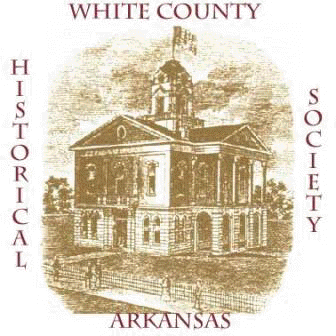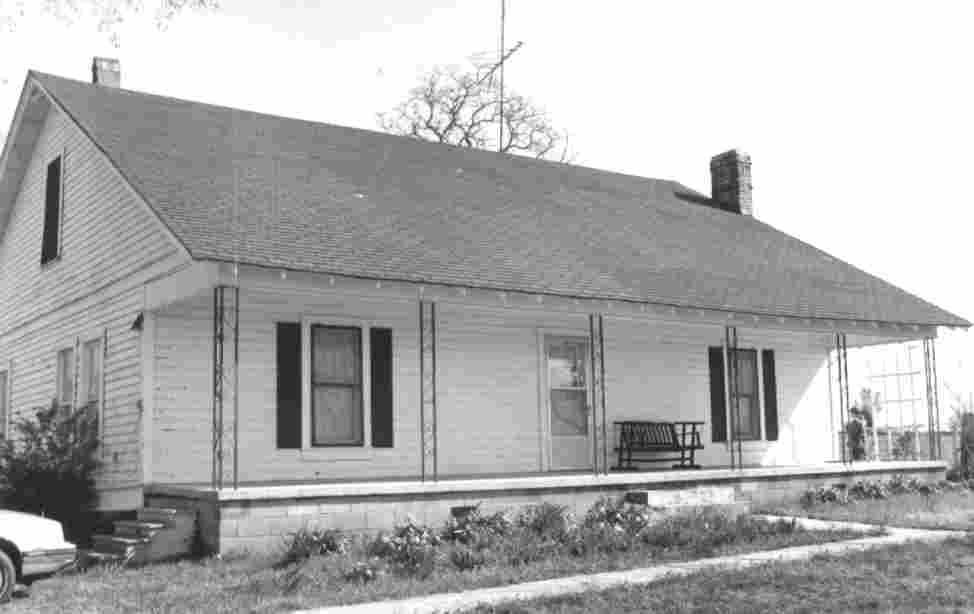


-courtesy Arkansas Historic Preservation Program
The Carlton-Hardy home was built by Dr. Francis Carlton prior to the Civil War.
By HEBER TAYLOR
Arkansas Democrat-Gazette, July 23, 2000
The 170-year-old White County community known as Center Hill – located nine miles west of Searcy on Arkansas 36 – probably got its name from being on a hill about halfway between Searcy and Joy.
B. H. Carlton, who was born there in 1861, referred to the area as "the beautiful Searcy Valley" in his memoirs.
The military road that started in Missouri at the Mississippi River passed through Center Hill on its way to Texas and helped the community to develop. It had a post office by 1856. It had a school, churches, a store or two and at least one doctor before the Civil War.
Glen Butler, a longtime resident, said that his great-grandfather, W. D. Neal, was one of the Center Hill men who fought for the South. He was wounded at Shiloh. Neal walked home, and his family spotted him as he walked down a lane to their home in the woods. "They wanted to give him a hero’s welcome," Butler said. "He was walking with a bad limp – he still had a minie ball in his hip. And he wouldn’t let the family touch him because he was covered with lice."
Another Confederate veteran was Dr. Francis Carlton, a Georgia native who lived in Mississippi before moving to Center Hill in 1860. According to his son B. H. Carlton, the doctor rode a large white-faced sorrel horse named Della to minister to patients "scattered far and near."
The White County Historical Society has a copy of B. H.’s memoirs, which tell about his father riding off to war on Della. B. H. said that his father "served in a medical capacity and witnessed the most horrible suffering of the wounded and dying."
B. H. was only 4 when his father came home from the war "sick and nearly blind." He remembered that his mother cried for joy, although his father was "terribly broken and sick with fever."
Dr. Carlton had smallpox and wasn’t expected to live. The war wasn’t over, and Yankee soldiers were camping at a creek about two miles away. One day, B. H. saw some of them approaching and alerted the family. He said his mother couldn’t keep "about a dozen dirty, ragged, unshaven and hungry men" from coming into the house.
They took everything of value from the house, the meat in the smokehouse and the doctor’s boots and prized horse. They left the house standing, B. H. wrote, because they realized they had been exposed to smallpox and might need his father to doctor them.
The family got through the war, and B. H. and his brothers could focus on school. They walked three miles to a little log schoolhouse where L.F. Sheridan, the schoolmaster, taught them reading, writing and arithmetic.
On B. H.’s first day, he played whip-cracker with the older boys. "I was delighted to be asked," he wrote. He was put on the end, and when the whip cracked, he landed about 40 feet away. "It was nearly the end of me," he said.
About six decades later, Glen Butler also attended a one-room six-grade school at Center Hill. He said his family lived close to the school and he would slip off and visit the school before he was old enough to go. The teacher would sometimes let him write on the blackboard.
He remembers a school game called "Fox in the Morning and Goose in the Evening." Two lines of students ran toward each other, and there was something to hand off, he said. Marbles, ball and hopscotch were other playground games he remembers.
School plays and the school Christmas tree party were community social events. Butler remembers one Christmas when Santa added to the excitement by throwing a firework called a torpedo against the floor. "It exploded with a terrible noise, and people and dogs went in every direction," Butler said. "Hounds ran like they were shot."
Saturday night parties with square dancing were another way to socialize. Butler said he didn’t get to dance much because he would be picking a guitar or mandolin instead.
Center Hill had a baseball team, as did Crosby nearby. Butler said that he didn’t play baseball, but his left-handed cousin, Randal "Sloke" Butler, played professionally. Randal got his start at Crosby before he moved to Pangburn and then Center Hill. He was pitching for Sioux Falls, S.D., in the mid ‘30s when he hurt his pitching arm and dropped out of professional baseball.
From its early days until about 1970, cotton and cotton gins were important to Center Hill. Dr. Carlton owned a horse-powered cotton gin, and B. H. worked there at age 9. His job, he wrote, was to ride on "the little box seat attached to the lever right behind the mules and whip them when they were too slow."
When Glen Butler was a young man, he worked at the gin owned by Bob Butler, his uncle. One season, the gin turned out nearly 3,000 bales of cotton. It caught on fire one night, and Bob Butler died of a heart attack while helping to put the fire out.
For most of his working years, Glen Butler worked at cotton gins and sawmills. He was not drafted in World War II because he was in the timber industry. "In 1942, the government put a freeze on timber," he said. "They wanted me to stay with the sawmill."
The land around Center Hill is now used to grow soybeans and to raise cattle. There are also a few chicken houses and dairy farms.
Center Hill may have peaked as a business center soon after World War II. Robert O. Turman, a Christian Fellowship minister, said that around 1945-50 the town had two grocery stores, a dry goods store, a blacksmith shop, a mechanic’s shop, a planning shop, a barbershop, a theater and a doctor’s office.
Now the community had one store – Country Store #2. Owned by Phillip Pemberton, it sells gas, groceries, sandwiches and other light meals.
Other Center Hill enterprises are a Christian school for kindergarten through 12th grade and a three-year Bible college. These are directed by Robert O. Turman and his son Paul.
Paul Turman said the school was established in 1971 and last year had 42 students. The college program currently has 12 students. The college courses are taught at night, and during the day the students work at a general maintenance shop called Center Hill Sales and Service.
The Turmans are active in the Center Hill Volunteer Fire Department, located near their school. They said that in 17 of the fire department’s 20 years, it ranked No. 1 in Arkansas in its ability to respond quickly to a fire.
The Christian Fellowship Church that the Turmans work with is six miles east of Center Hill. The only church building in the community is the meeting place of the Center Hill Missionary Baptist Church. It began in 1853, and before the churches got their own buildings, the congregation shared the Union Meeting House with Methodists and Presbyterians.
Center Hill has two cemeteries: the Center Hill Baptist Cemetery and the Center Hill Presbyterian Cemetery. Wanda Wilson was treasurer of the Center Hill Baptist Cemetery Association before she was killed in the tornado that struck her home on January 21, 1999. She was the only person killed at Center Hill on that destructive night.
The cemeteries are ties to the community’s past, as is the home of Dr. F. P. Hardy. He was the only doctor around 75 years ago, Glen Butler said. His home has been restored and is now the residence of the Sam Durham family. The White County Historical Society has a 1938 news article that says the house was once owned by Dr. Francis Carlton and was eventually bought by Hardy.